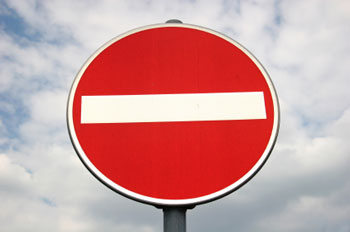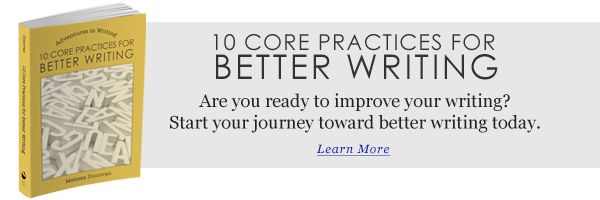To the passive reader, it’s a short horizontal line that appears somewhere in a text, usually joining two words together.
To a writer, it’s something else entirely, but what? Is it a dash, a hyphen, or a minus sign?
More than once, I’ve been pecking away at my keyboard and stopped suddenly when confronted with this versatile and confounding punctuation mark.
Many people use dashes and hyphens interchangeably, which is understandable, since most of us use the exact same keyboard character for both dashes and hyphens. However, they are technically two completely different punctuation marks.
When you use these punctuation marks, do you know whether you’re using them as dashes or hyphens?
This post looks at the following punctuation marks:
- Hyphens
- Dashes
- Em-dashes
- En-dashes
Hyphens
A hyphen is used to connect words in order to form a compound. It was also used commonly during the typewriter era to show that a word was broken at a carriage return, but that usage is rarely seen these days. Examples include:
- ten-year-old
- merry-go-round
- editor-in-chief
- co-worker
- e-book
Hyphens are also used to denote prefixes and suffixes when they are not affixed to a base word. An example would be re- or -ed.
Hyphenated Modifiers
Certain modifier combinations call for hyphenation. When two modifiers together modify another word, they are often hyphenated. For example, in the phrase “real-world situations,” the words real and world are connected with a hyphen. Note that real modifies world (the world is real) and as a single unit (a hyphenated modifier), the two words together modify situation. This is standard practice when one modifier modifies another to form a single modifier to a noun or verb.
Note, however, that adverb-adjective combinations are not normally hyphenated. For example, a “well understood concept” is not hyphenated (well is an adverb modifying the adjective understood).
Dashes
There are two types of dashes: the em dash ( — ) and the en (-) dash.
The Em Dash
This is also called the double dash — and rightly so — because it actually consists of two dashes without spacing before or after either one. Do note that the spacing is up for debate as some style guides and writers include a single space before and after the em dash, especially in online publishing due to issues with how browsers read and display certain punctuation marks.
The em dash is used to evoke emphasis or to “set off an element added to amplify or to digress from the main clause” (Publication Manual of the APA, 2001, p. 291).
The En Dash
An en dash is used more like a hyphen because it connects words. This connection forms a compound adjective where each individual word has equal weight. Here are two examples: Did you receive the July-August issue of the publication? Will you be on the San Francisco-New York flight?
Why are they called em and en dashes?
In typesetting, the em dash is the same width as the letter m, while the en dash matches the width of the letter n. It’s interesting to note that technically, a hyphen should be a tad bit shorter than the en dash. However, typewriters and computers only have the one punctuation mark (right above the p key) which must do triple duty (hyphen, em dash, and en dash), so unless you’re a professional typesetter, there’s no need to worry about measuring your marks.
How do you use dashes and hyphens in your writing? Do you have any questions or thoughts to add about punctuation marks in general? Leave a comment.






Really interesting post! I think this goes to show how important making use of the correct punctuation can be. It really can make the difference between an audience understanding what and the way in which you are saying things in your writing or not.
I agree! Punctuation helps keep writing clear. I always liken punctuation to musical notation. It informs the rhythm of the writing and guides the reader. Its purpose is really to make a piece easier to read. Plus, learning about punctuation is fun and interesting.
Excellent piece. Few examples, for each punctuation, would have been a cherry on the top.
(FEEL FREE TO SUGGEST IMPROVEMENTS IN MY COMMENT)
Somehow I feel like I’ve already read this post before. Deja vu? I already knew the difference between hyphens and dashes, but not so much the different types of dashes. The last time I read about it (if indeed I did), the details about different dashes didn’t stay in my long-term memory. This time, I expect that to escape from my brain a week from now as well. Hehe.
I haven’t really thought about the adverb-followed-by-adjective (Is that correct usage?) cases. I think, I wouldn’t hyphenate them in general. In some cases though, such as “well-known”, I would hyphenate them not because I think I should, but because I am not thinking. I am just hyphenating them because I see them hyphenating them all the time. And that is inconsistent with how I usually use it.
“Well known” actually doesn’t get hyphenated because “well” is an adverb while “known” is an adjective, and adverb-adjective combinations don’t take the hyphen. Sometimes I have to stop and really think about whether modifiers are adjectives or adverbs and which pairs take a hyphen. In any case, I go for readability above all else.
GREAT post. I love the topic because when I’m editing things for work there are SO many people who have trouble with dashes and hyphens and sometimes–oh, it’s terrible–they’ll use one of each in the same sentence and it just doesn’t make any sense at all. I wonder if it would be appropriate for me to email this link to all of my colleagues… hahaha.
Thanks! Oddly, I don’t see dashes and hyphens misused as often as some other punctuation marks (like apostrophes). In any case, I have always enjoyed learning this stuff, and it’s fun to share it with others.
This is the best explanation of em and en dashes I’ve found. Thanks!
Aw, thanks so much!
This post omits the most wonderful use of the en dash: for example, post[en dash]World War or high school[en dash]musical writers. A hyphen is inappropriate in these situations: we don’t mean a “post-world” war, and we are not talking about intoxicated “school-musical writers.” Here is a post that explains it all–it’s long-winded but tongue-in-cheek, and definitely worth a look. (It’s made the en dash my absolute favorite punctuation mark!)
http://gawker.com/357762/times-guilty-of-crimes-against-punctuation
Thanks for sharing that link, Ben. I’ll be sure to check it out.
Really speaking there is not much difference between a hyphen and an en dash. Both can be used interchangeably in the same context. The en dash has the quality of describing ranges (from — to). If you ignore this quality then the en dash and the hyphen are virtually the same.
The average reader won’t notice the difference between any types of dashes or hyphens, but other writers and advanced readers might.
Melissa, thanks for clearing up the difference between hyphens and dashes. You should, however, point out to your readers that, unlike a typewriter, it is indeed possible to type an en dash and an em dash on a computer. How do you think anything gets typeset these days? Using lead type? No,on a computer. Simply use a modifier key (or modifier keys) in combination with the hyphen. You get the en dash by typing “option-hyphen,” and you get the em dash by typing “shift-option-hyphen.” BTW, this works on any Mac. If you’re trying to do anything like this using Windows, I only have one question: “For God’s sake, why?” I’d rather slit my wrists and die than have to do any page layout, typesetting, graphic design, etc. etc. on a Windows machine.
Uh, thanks, I think.
This blog, and more specifically this article, are not meant to be instructional guides on how to use hardware and software. Providing instructions on how to insert dashes is just a little beyond the scope of what we’re doing here, which is discussing writing and punctuation, in particular, and not typesetting. But thanks for providing those instructions. I’m sure readers will find them useful.
I’m a happy Mac user myself and wouldn’t dream of switching back to Windows, but if it were between Windows and death, I’d take Windows. I mean, it’s bad…but it’s not that bad.
Yes, exactly! We only have stupid Windows machines at work. I also know how to do it on a mac. Why is it showing up differently?
In my native language we don’t really use any of these signs so it really puzzles me in written English. I am currently writing a MS Word document and use space-dash-space frequently and sometimes it comes up as a double dash, and sometimes as a single dash! What am i doing wrong and can I prevent this? I had to go back and copy-paste a double dash in all the places it was single to get a coherent look. Word is a really crappy program, but most of us have to use it at work.. Please help!
First you need to determine whether you’re trying to insert an em dash or an en dash (sounds to me like you’re looking for the em dash). On my version of MS Word, I have to insert –> symbol (then go to special characters) to get a proper em dash. It’s not a double dash. You can always google “em dash microsoft word” along with the version of Word that you’re using and should be able to find instructions. Good luck!
Once again, we forget the purpose of punctuation. It is to make the text more easily read and understood.
When the reader is unable to distinguish between an em-dash and an en-dash and a hyphen, and hesitates even for a nano-second, the degree of difficulty of reading a particular story has increased.
The em-dash and en-dash are nothing more than creations from the minds of over-caffeinated geeks whose grasp of the English language is minimal at best.
I don’t know who created the em dash and en dash, but I certainly don’t see how such harsh criticism and name-calling is warranted against them. People who set standards for grammar, spelling, and punctuation are in the business of grasping the language, so I doubt their understanding of English was minimal. I personally find the difference between the hyphen and en dash rather insignificant; however, I see a need for the em dash as a separate punctuation mark with rules for how it should be used. If you’ve ever read a poor piece of writing peppered with hyphens and em dashes, you’ll quickly see that rules around their usage are quite necessary.
Thanks for the clarification!
You’re welcome.